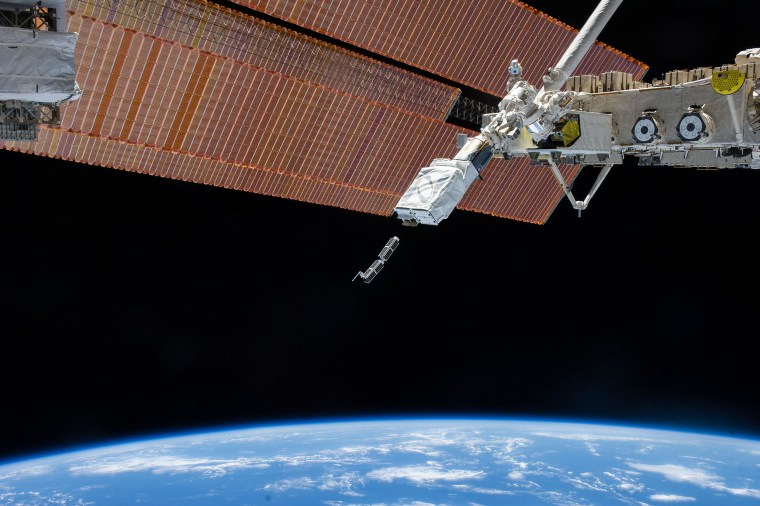The first mini-spacecraft in what's destined to be a 28-satellite constellation of Earth-watchers were ejected into orbit from the International Space Station on Tuesday, using a spring-loaded launcher.
San Francisco-based Planet Labs had its "Flock 1" satellite fleet flown up to the station last month on an unmanned Orbital Sciences Cygnus cargo craft, as part of a commercial program backed by Houston-based NanoRacks. On Tuesday, Japanese astronaut Koichi Wakata used the robotic arm on Japan's Kibo laboratory module and a gizmo known as the Small Satellite Orbital Deployer to put four satellites in orbit, two at a time.
The rest of the satellites are to fly away over the next couple of weeks.
Each of Planet Labs' satellites is equipped with an imaging telescope that can take low-cost, high-resolution pictures of Earth for purposes ranging from environmental monitoring to disaster management to real-estate marketing.
"Our company goal is to image everywhere very frequently, for everyone," Planet Labs co-founder Robbie Schingler said in a NASA statement. "If you image everywhere, then that actually means that you can image anywhere. That’s going to be quite transformative for a number of countries, for a number of companies, and so forth."
The small satellites are also known as CubeSats because they're built in boxy shapes that follow a 10-centimeter cubic standard. CubeSats could well revolutionize the satellite industry over the next few years.
